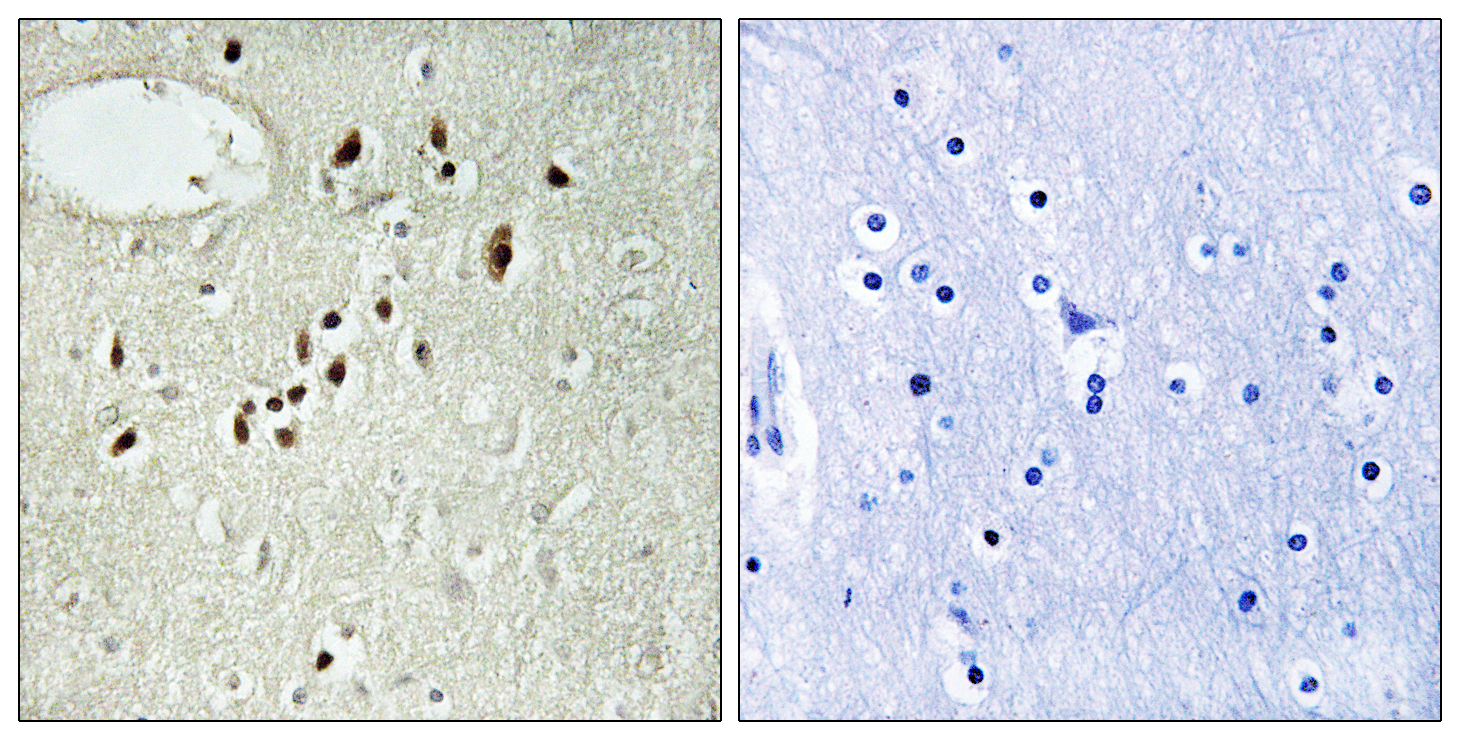Emx2 Polyclonal Antibody
- Catalog No.:YT1550
- Applications:IHC;IF;ELISA
- Reactivity:Human;Mouse
- Target:
- Emx2
- Gene Name:
- EMX2
- Protein Name:
- Homeobox protein EMX2
- Human Gene Id:
- 2018
- Human Swiss Prot No:
- Q04743
- Mouse Gene Id:
- 13797
- Mouse Swiss Prot No:
- Q04744
- Immunogen:
- The antiserum was produced against synthesized peptide derived from human EMX2. AA range:91-140
- Specificity:
- Emx2 Polyclonal Antibody detects endogenous levels of Emx2 protein.
- Formulation:
- Liquid in PBS containing 50% glycerol, 0.5% BSA and 0.02% sodium azide.
- Source:
- Polyclonal, Rabbit,IgG
- Dilution:
- IHC 1:100 - 1:300. ELISA: 1:20000.. IF 1:50-200
- Purification:
- The antibody was affinity-purified from rabbit antiserum by affinity-chromatography using epitope-specific immunogen.
- Concentration:
- 1 mg/ml
- Storage Stability:
- -15°C to -25°C/1 year(Do not lower than -25°C)
- Other Name:
- EMX2;Homeobox protein EMX2;Empty spiracles homolog 2;Empty spiracles-like protein 2
- Molecular Weight(Da):
- 28kD
- Background:
- This gene encodes a homeobox-containing transcription factor that is the homolog to the 'empty spiracles' gene in Drosophila. Research on this gene in humans has focused on its expression in three tissues: dorsal telencephalon, olfactory neuroepithelium, and urogenetial system. It is expressed in the dorsal telencephalon during development in a low rostral-lateral to high caudal-medial gradient and is proposed to pattern the neocortex into defined functional areas. It is also expressed in embryonic and adult olfactory neuroepithelia where it complexes with eukaryotic translation initiation factor 4E (eIF4E) and possibly regulates mRNA transport or translation. In the developing urogenital system, it is expressed in epithelial tissues and is negatively regulated by HOXA10. Alternative splicing results in multiple transcript variants encoding distinct proteins.[provided by RefSeq, Se
- Function:
- disease:Defects in EMX2 are the cause of schizencephaly [MIM:269160]. Schizencephaly is an extremely rare human congenital disorder characterized by a full-thickness cleft within the cerebral hemispheres. These clefts are lined with gray matter and most commonly involve the parasylvian regions. Large portions of the cerebral hemispheres may be absent and replaced by cerebro-spinal fluid.,function:Transcription factor, which in cooperation with EMX2, acts to generate the boundary between the roof and archipallium in the developing brain. May function in combinations with OTX1/2 to specify cell fates in the developing central nervous system.,similarity:Belongs to the EMX homeobox family.,similarity:Contains 1 homeobox DNA-binding domain.,tissue specificity:Cerebral cortex.,
- Subcellular Location:
- Nucleus .
- Expression:
- Cerebral cortex.
- June 19-2018
- WESTERN IMMUNOBLOTTING PROTOCOL
- June 19-2018
- IMMUNOHISTOCHEMISTRY-PARAFFIN PROTOCOL
- June 19-2018
- IMMUNOFLUORESCENCE PROTOCOL
- September 08-2020
- FLOW-CYTOMEYRT-PROTOCOL
- May 20-2022
- Cell-Based ELISA│解您多样本WB检测之困扰
- July 13-2018
- CELL-BASED-ELISA-PROTOCOL-FOR-ACETYL-PROTEIN
- July 13-2018
- CELL-BASED-ELISA-PROTOCOL-FOR-PHOSPHO-PROTEIN
- July 13-2018
- Antibody-FAQs
- Products Images

- Immunohistochemistry analysis of paraffin-embedded human brain tissue, using EMX2 Antibody. The picture on the right is blocked with the synthesized peptide.



